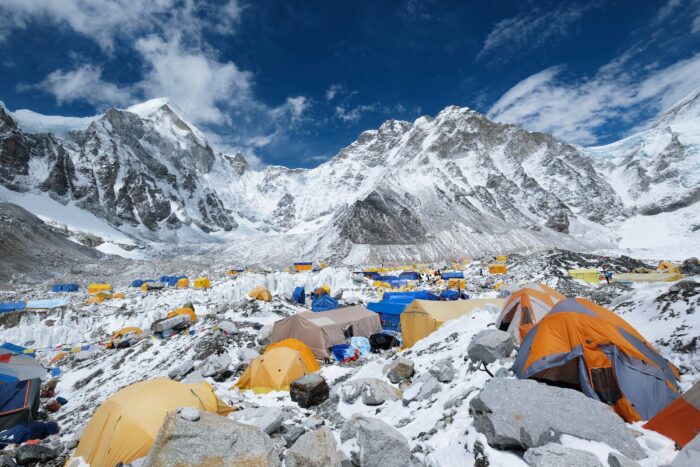In unprecedented speed, mountaineers Adrian Ballinger and Emily Harrington summited the world’s sixth-highest peak today (Saturday, Oct. 1), just ten days after leaving their home in California.
The pair reached the 8,188-meter (26,864-foot) summit of Cho Oyu, which sits on the Nepal-Tibet border, after spending less than a week on the mountain.
As reported by Alpenglow Expeditions, Adrian Ballinger and Emily Harrington, with Pasang Rinji Sherpa, made the summit on Cho Oyu in “sunny and warm conditions.”
Ballinger called it “the most perfect day I’ve ever seen on an 8,000-meter peak,” with zero wind and “warm, gloveless” temps that allowed the team to spend 45 minutes on top.
They skied the descent, cutting turns for thousands of vertical feet back to the low camp on the mountain where the snow ended at rock.
USA to USA, in Two Weeks
Focus on Climbing Faster

Training, Waiting, and On-Call

Documented on Snapchat











